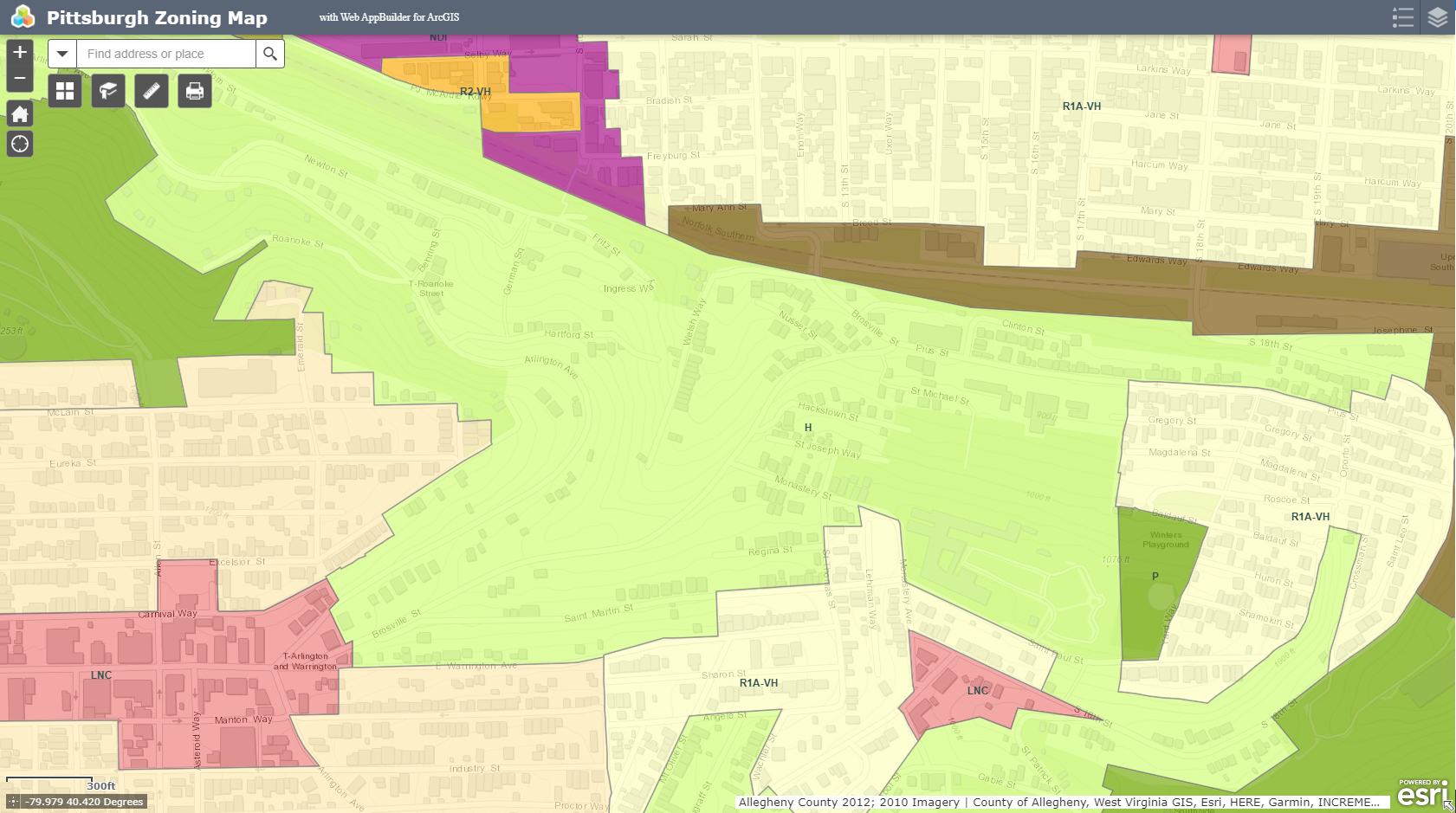Pittsburgh Zoning Districts - H Density
By Carolyn Ristau
Density and Height Standards
Zoning districts regulate the height of primary uses and the density. The H (Hillside) district is a truly special district in that density limits relies less on regulations and more on site constraints. While in most districts density is regulated through minimum lot sizes, floor area ratios (FARs), setbacks (the distance between the property line and the building, structure, or use), and height; in the H only the minimum lot size and height are used. Instead of setbacks there is a maximum area of disturbance. If there is a site-specific hardship that prevents a project from meeting these standards, a dimensional variance may be sought from the Zoning Board of Adjustment.
Note: accessory uses may have more restrictive height standards and more permissive setback regulations. We will discuss this more in a later post.
Note: The zoning code standards listed in this post were those available in the online zoning code as of July 2021. Whenever there is a code amendment it often takes months for the online version to be updated. Zoning staff have access to the most recent code amendments, which can also be found on the city’s online legislation center.
Standards
Minimum lot size: 3,200 sq ft
Minimum front setback: none
Minimum rear setback: none
Minimum exterior/street side setback: none
Minimum interior side setback: none
Maximum height: 40 ft, not to exceed 3 stories - Yes, the proposal must comply with both the height in feet and the height in stories or else seek a dimensional variance from the Zoning Board of Adjustment.
Maximum area of disturbance: 50% of the total lot area
For Additional Information:
See our overview of the H for more about this district and our Introduction to Pittsburgh’s Zoning Districts for the complete list of base zoning districts in the city.

